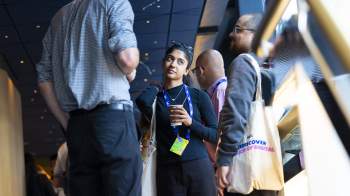How AI is revolutionising Ad-Verification: 5 Key Trends.
Guy Tytunovich, CEO and Founder, CHEQ
AI is improving brand safety, and it going to get personal.
Ad-verification is on the verge of disruption as AI begins to revolutionise the way we look at brand-safety and ad-fraud. While first-gen technology has typically relied on rules-based system, blacklists and whitelists, the emergence of new tech is expected to drive change and give birth to new trends. Below are 6 such trends in ad-verification we believe will be accelerated by the AI revolution:
1. Brand Safety is Going to Get Personal
In contrast to blacklisting & whitelisting, the adoption of machine learning (for textual analysis) and deep learning (for video analysis) will allow advertisers to create custom brand safety categories, tailored to their needs. For example - a high-calorie soda brand will have access to a “Diabetes” brand safety category, ensuring their ads never serve alongside diabetes related content. This kind of granular brand safety control will enable advertisers to accurately exclude the very specific content that doesn’t suit them, without over-blocking and without losing reach.
2. The Supply-Side is Going to Get Proactive About Verification
The premise of highly accurate, customised brand safety categories putting an end to over-blocking is especially appealing to publishers, who will be highly incentivised to promote such solutions from their end. This will enable supply-side players to maximise the monetisation of their inventory and reduce false-positives dramatically.
3. Advertisers will Flock Back to News Sites
First-generation verification has left advertisers anxious about investing in risky environments such as news sites. In fact, 43 percent of media buyers explicitly avoid advertising next to news. Improved accuracy will allow news publishers to restore this trust, expanding acceptable placements by advertisers, and broadening the reach and scale of ads on publishers sites once again.
4. Verification will Become Completely Autonomous
Today we are witnessing a surge in ad verification related roles across advertisers, agencies, publishers and platforms. Many of these roles are dedicated to monitoring verification efforts, analysing performance and optimising for future campaigns. However, as the deployment of AI grows, verification is becoming fully automated and scalable across both brand-safety and fraud prevention. This means ad-verification will ultimately become a plug-&-play service which requires minimal human intervention.
5. Transparency
While ad-verification has traditionally been black-boxed, improved accuracy and capabilities will allow for more transparency around decision making. Advertisers will be able to view block reasons, labels and other telling pieces of data in absolute real-time, allowing them to vet their verification vendor’s performance.
Related content
Q&A: A responsible approach to brand safety
Learn moreDespite GARM’s setback, look to Team GB cyclists to keep collaboration on track
Learn moreWhat we know from Starmer’s first King’s Speech
Learn moreThe Party Manifestos: What do we know?
Learn more
Rediscover the joy of digital advertising
Champion connections instead of clicks. Capture audiences' imaginations, not just their attention. Boldly find your own beat instead of letting tech set the pace. It’s time to rediscover the joy of digital.



